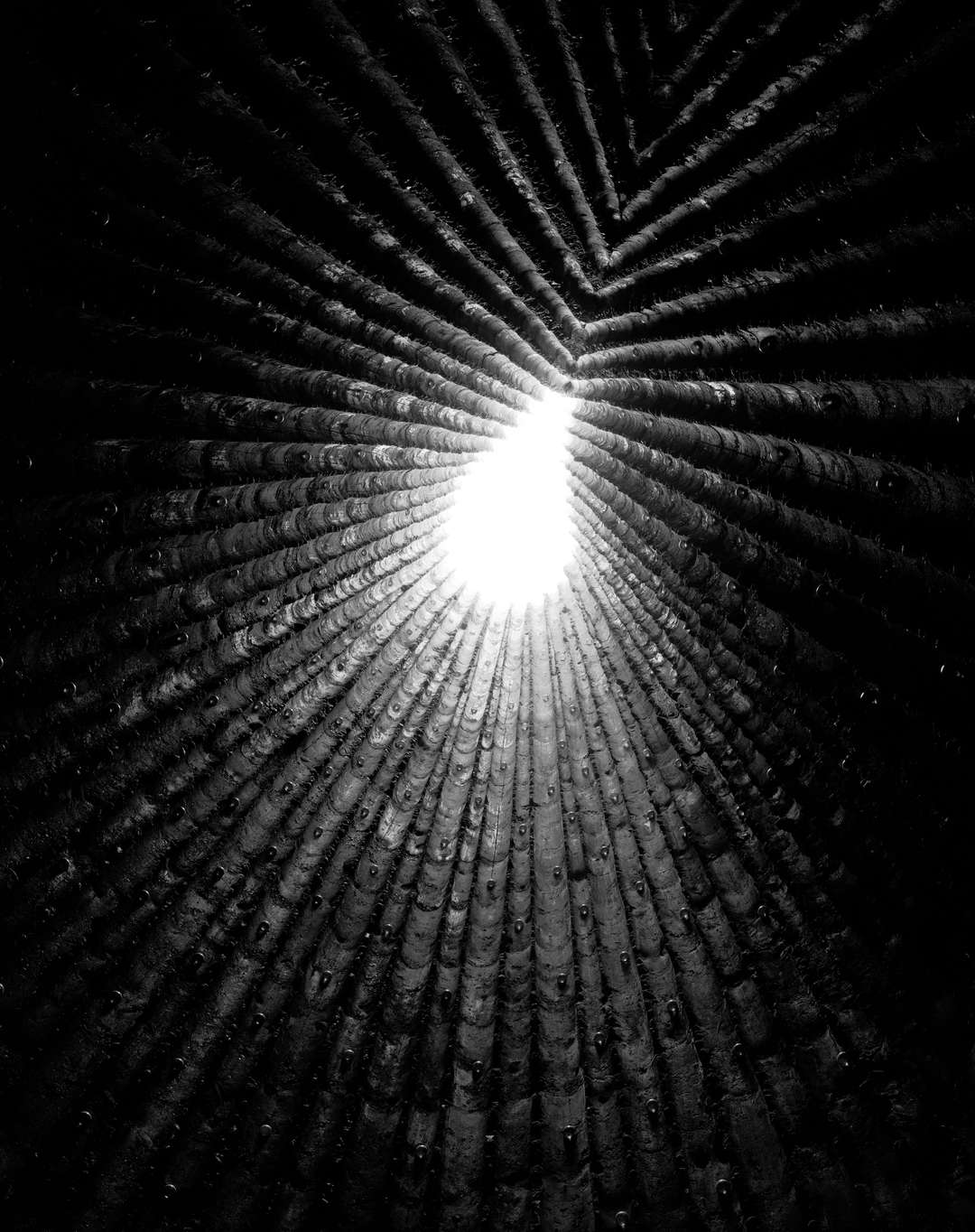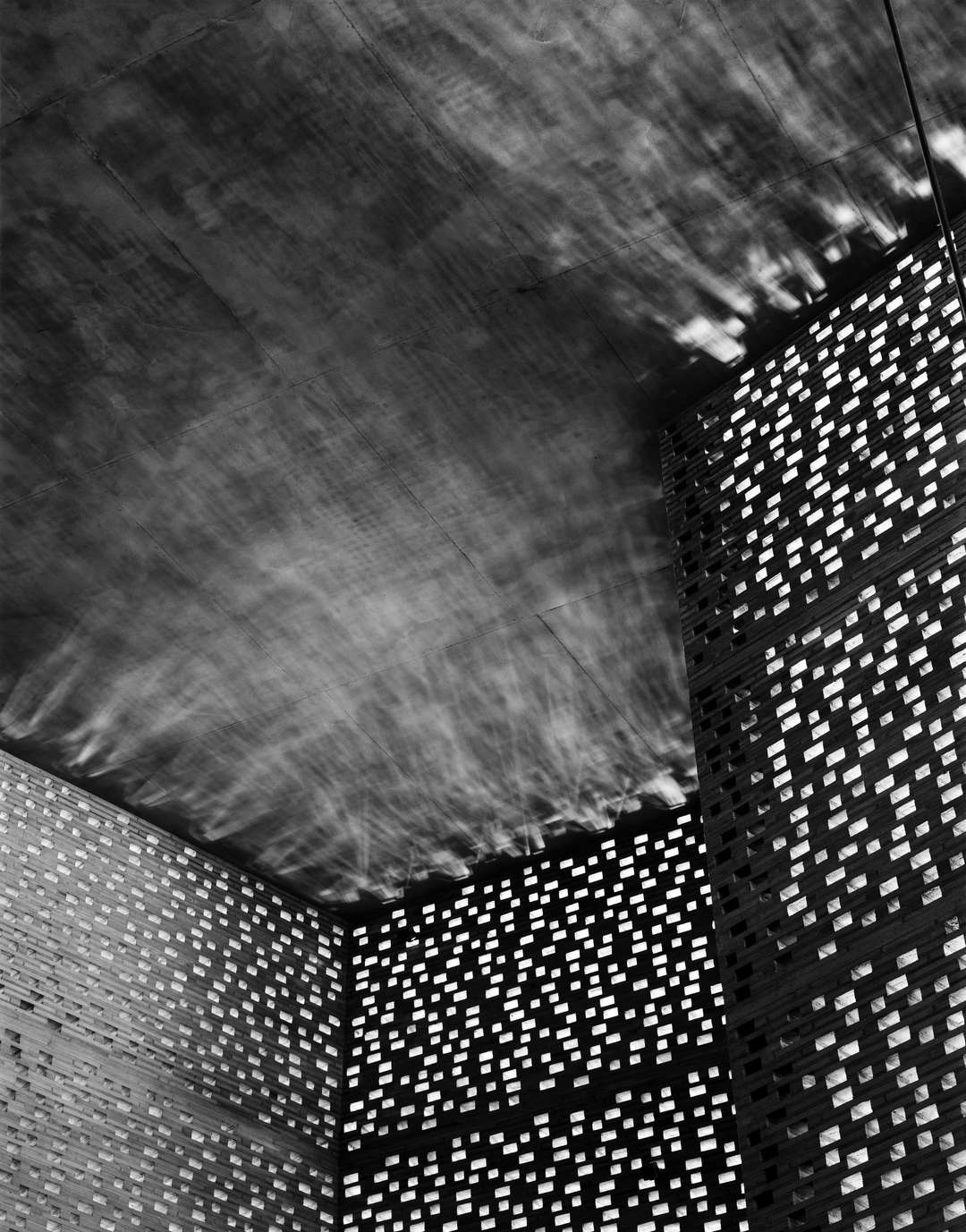“Architecture is the masterly, correct, and magnificent play of masses brought together in light,” Le Corbusier wrote in his 1923 manifesto Towards a New Architecture. The same can be said of the architectural photography of Hélène Binet, the 2015 recipient of the Julius Shulman Photography Award whose work is now on view at WUHO Gallery’s “Hélène Binet: Fragments of Light” through March 29.
Over the past 25 years, Binet has worked closely with the highest profile architects — Zaha Hadid, Daniel Libeskind, and Peter Zumthor, to name a few — photographing their work, as well as historic works by the likes of Le Corbusier, Alvar Aalto, and Sverre Fehn. Eschewing the distractions of color, the Franco-Swiss photographer’s stark black-and-white imagery focus entirely on the interplay that architects stage between structure (Le Corbusier’s “masses”) and light, highlighting the entrypoints through which the sun can penetrate an interior and travel within a space, as well as light’s selectivity in illuminating certain surfaces while neglecting others.
“Kapelle fur den heiligen Bruder Klaus 03,” 2009, a photograph of Peter Zumthor’s Bruder Klaus Field Chapel outside of Cologne
“Kolumba 01,” 2007, a photograph of Peter Zumthor’s Kolumba Museum in Cologne. The punctured façade creates a mosaic of light on the interior walls that also stretches lines of light across the ceiling.
In Zumthor’s Bruder Klaus Field Chapel, light descends from a raindrop-shaped oculus and illuminates the intricate texture of the charred, undulating ceiling, a remnant of the spruce-tree framework that once held the concrete in place before it was burned away. A tight crop of Hadid’s Rosenthal Center for Contemporary Art in Cincinnati shows how light carves the surfaces of the building into separate planes, exaggerating their outlines by building a contrast between the high-exposure, sunlit surfaces and shadowy black recesses in between. In Rome, Hadid’s MAXXI museum, lit artificially from below, is portrayed as a series of bright, fluid geometric protrusions against the black void of a starless night sky.
“Rosenthal Center for Contemporary Art,” 2003, a museum by Zaha Hadid
“MAXXI Diptychon,” 2009, a photograph of Zaha Hadid’s MAXXI Museum in Rome
“This is a cliché, but in photography, we make drawings about light,” Binet told Architizer. “Before shooting, I make notes about where the light is at what time. I often compare myself to a musician; to play a score you need to know the music. I know the atmosphere, its relationship to the materials, the relationship to the landscape, the relationship to space.”
Binet’s relationships with her clients, often the architects themselves, also serve to bolster her understanding of their buildings. “I’ve worked with Zaha for almost 25 years, and we’ve gotten to know each other,” said Binet. “Each relationship is different, but I don’t get specifications. It’s something else, like an osmosis. You’re inspired by their personalities, or their commentary on completely different things.”
“Firminy C,” 2007, a photograph of Le Corbusier’s Saint-Pierre church in Firminy-Vert, France
The collection of photographs now on view also includes works by architects Binet was never able to meet, including Le Corbusier himself. Her shots of his posthumously built, 2006 concrete Saint-Pierre church at Firminy-Vert in France captured the waves of light that reflect off of the floor and trace luminous ripples along the three walls facing the altar, a surprise product of the grooved polycarbonate cylinders mounted onto the walls that occurs daily until about noon. Fellow photographer Henry Plummer’s 2013 book Cosmos of Light: The Sacred Architecture of Le Corbusierpoints out that Le Corbusier could not have predicted this effect, but took a great joy in such accidents of construction. Binet takes a similar approach to photography.
“It’s also about reacting to something that happens very quickly,” she said. “I make plans, but you can be surprised by the building and forget about the plans.”
“Hélène Binet: Fragments of Light” is on view at the WUHO Gallery in Los Angeles through March 29.





No hay comentarios:
Publicar un comentario